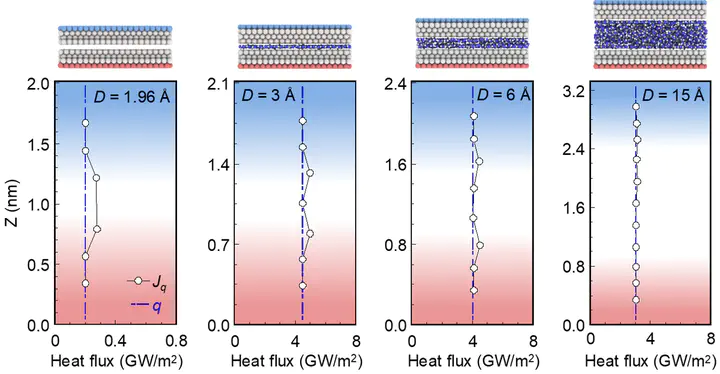Local heat flux of resonant layers at solid–liquid interface

Abstract
Understanding the mechanisms of interfacial thermal energy transport is essential for the development of advanced nanoscale thermal management. Using the conventional computation method, the local heat flux at the interfacial solid layers increased singularly owing to the thermal resonance induced by quasi-Casimir coupling. However, the underlying reasons for the excessive heat flux at interfacial layers are still open for question. Although the thermal resonance between the solid-solid or liquid-liquid interfacial layers has been verified, the local heat flux of resonant layers at the solid-liquid interface remains unclear. In this study, classical nonequilibrium molecular dynamics simulations were carried out using the LAMMPS package to compute the local heat flux of interfacial layers at solid-liquid interface. We found that the pairwise interactions dominate the thermal energy transport at the solid-liquid interface. The local heat flux exhibits a singular excess at the resonant interfacial solid layers in the case of smaller D, but distributes uniformly in the case of large D without interfacial resonance. Thus, the unexpected increase in local heat flux at interfacial layers is owing to the resonance between the interfacial solid layers.